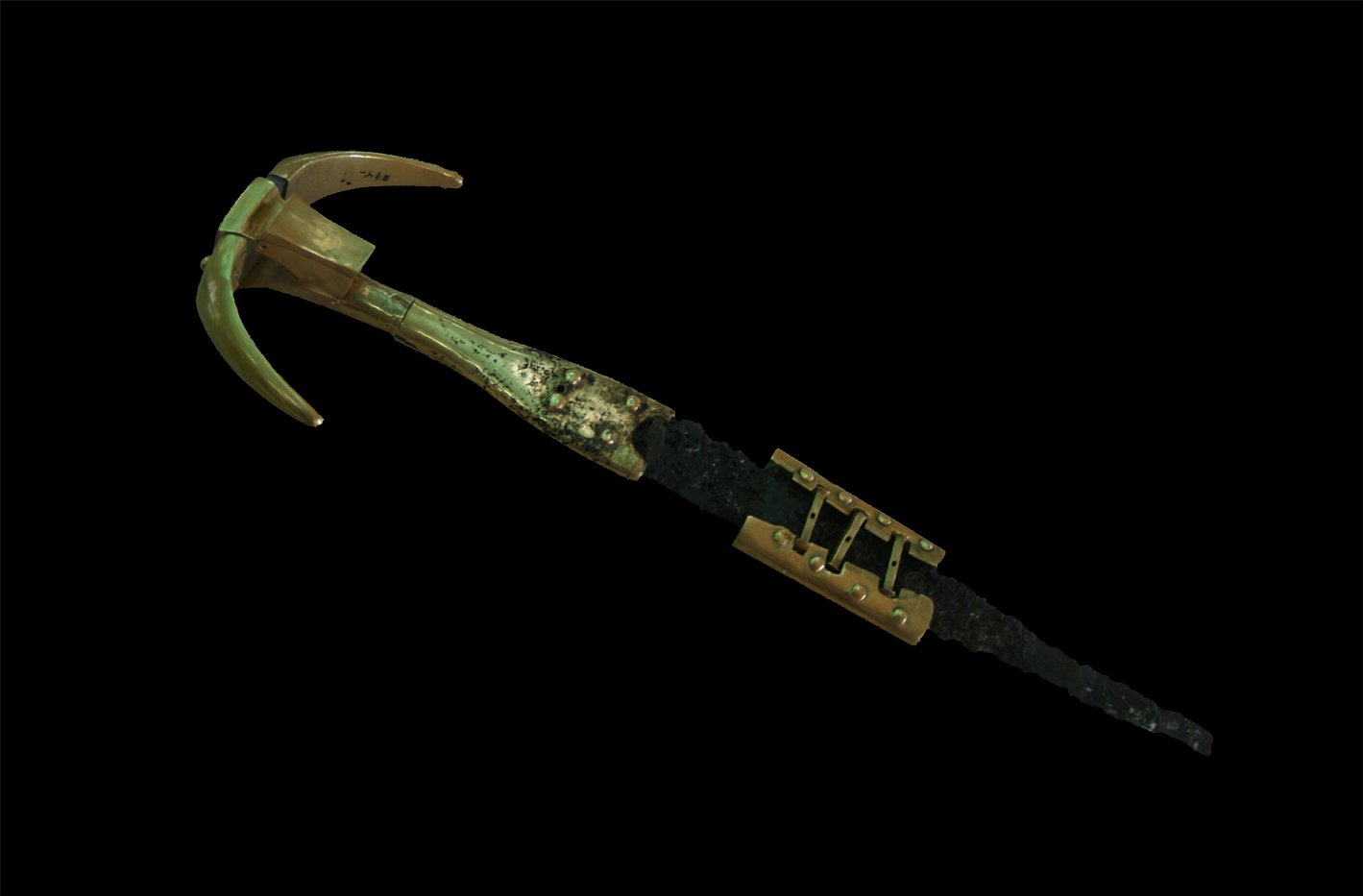The Alaca Höyük meteoric dagger is an iron forged dagger with extraterrestrial origins.
During the Bronze Age, iron was more valued than gold (evidenced in the Kültepe tablets of 1950 BC), and very few ancient cultures had the smelting technology to extract a low-quality iron from limited sources of iron–nickel alloys.
Extracting usable metal from iron ore required maintaining a temperature of 1,500 °C (2,730 °F) and an advanced understanding of metallurgy using kilns or furnaces.
Sources of Iron were limited to meteoric iron, an early-universe protoplanetary-disk remnant found in iron meteorites made from the elements – iron and nickel. Iron meteorites are mainly thought to originate from M-type (aka M-class) asteroids which are the remnant cores of early protoplanets during the early formation of our solar system.
The Hittites were one such culture that is believed to have developed iron smelting technology during the middle of the 2nd millennium BC.
The Hittites were an Anatolian people who established an Empire stretching across most of Anatolia, parts of the northern Levant and Upper Mesopotamia, centred on the capital of Hattusa near modern Boğazkale, Turkey.
Most of what we know about the Hittites comes from cuneiform text written in either Akkadian (the diplomatic language of the time) or in the various dialects of the Hittite confederation, and from diplomatic and commercial correspondence found in archives in Assyria, Babylonia, Egypt and the Middle East.
From 1935–39, archaeologists excavating the Hittite settlement of Alaca Höyük discovered 14 “Princely tombs” or “Kingly tombs”, in which they found funerary offerings consisting of gold and electrum standing cups, in addition to the Alaca Höyük bronze standards and the Alaca Höyük meteoric dagger.
The dagger features an iron blade with a golden hilt and has been dated to between 2400 to 2300 BC during the Bronze Age.
An X-ray fluorescence (XRF) study of the blade in 2012 identified that iron and nickel, with trace amounts of cobalt, were the major components of the blade, with trace amounts of Ca, Zn, As, and Sr due to iron corrosion.
The study concluded the dagger was produced using meteoric iron, which was confirmed in a 2017 geochemical analysis published in the Journal of Archaeological Science. This predates the onset of the Iron Age in Anatolia and the Caucasus by almost 1000 years, where the Iron Age began around 1300 BC.
Header Image Credit : Noumenon – CC BY-SA 3.0 DEED
Sources : Japanese Institute of Anatolian Archaeology – Preliminary Report on the Analysis of an Early Bronze Age Iron Dagger Excavated from Alaca Höyük





